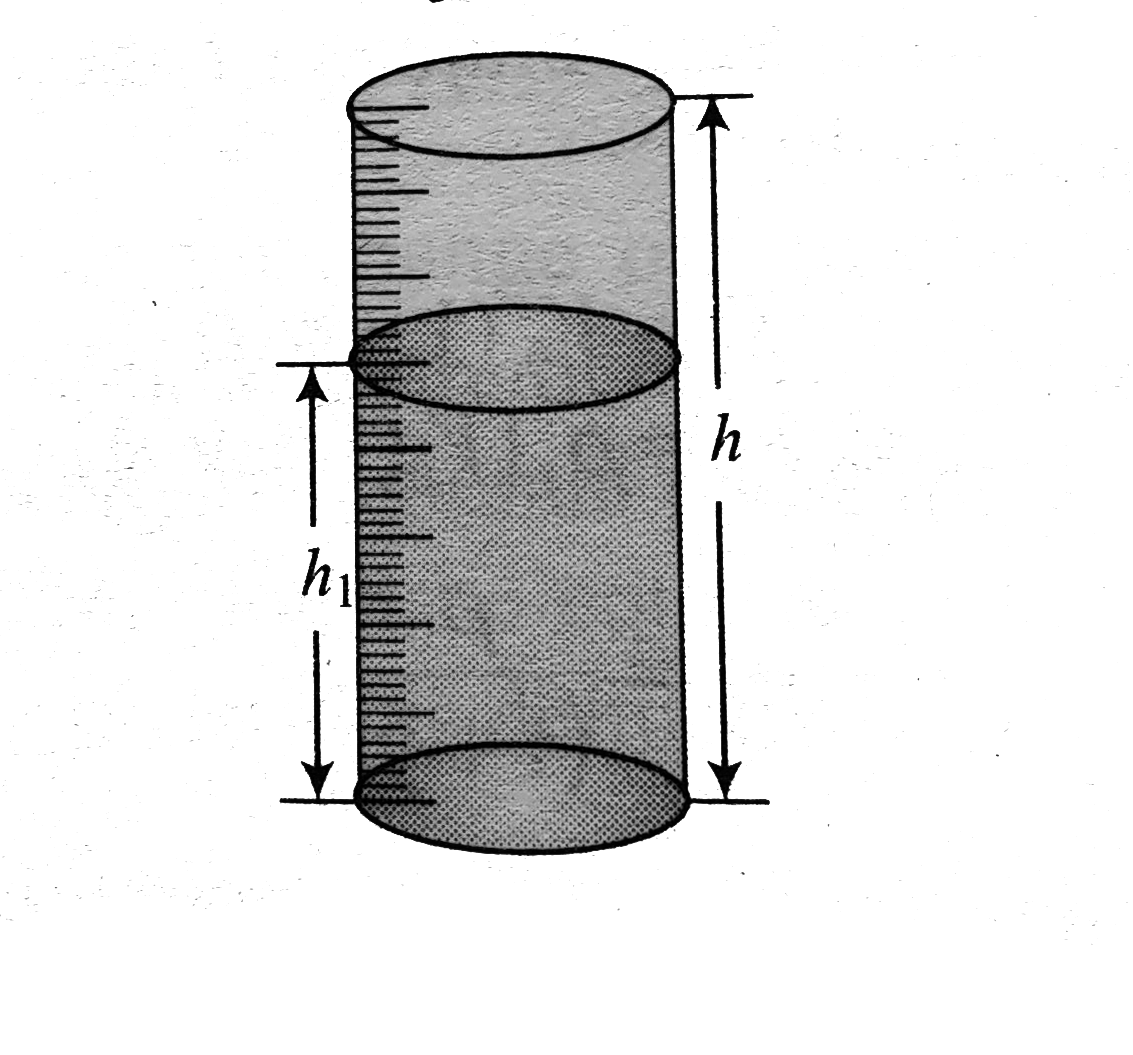Name the expansion of volume of a liquid taking into consideration of the expansion of container also.
It is called real volume expansion.
Topper's Solved these Questions
- THERMAL PHYSICSBOOK - SURA PUBLICATIONCHAPTER - THERMAL PHYSICSEXERCISE - ADDITIONAL QUESTION & ANSWERS (SHORT ANSWERS)
7 Videos
- THERMAL PHYSICSBOOK - SURA PUBLICATIONCHAPTER - THERMAL PHYSICSEXERCISE - ADDITIONAL QUESTION & ANSWERS (LONG ANSWERS)
4 Videos
- THERMAL PHYSICSBOOK - SURA PUBLICATIONCHAPTER - THERMAL PHYSICSEXERCISE - ADDITIONAL QUESTION & ANSWERS (ARRANGE THE FOLLOWING IN CORRECT SEQUENCE)
3 Videos
- QUARTERLY MODEL QUESTION PAPERBOOK - SURA PUBLICATIONCHAPTER - QUARTERLY MODEL QUESTION PAPEREXERCISE - Subjective Questions
51 Videos
Similar Questions
Name one application of thermal expansion of liquids.
View SolutionA non-conductiong body floats in a liquid at 25∘C with 1/3 of its volume immersed in the liquid. When liquid temperature is increased to 105∘C, 1/2 of body's volume is immersed is the liquid. Then, find the coefficient of real expansion of the liqquid (neglecting the expansion of container of the liquid) .
View Solution
Knowledge Check
A non-conducting body floats in a liquid at 20∘C. with 2/3 of its volume immersed in the liquid When liquid temperature is increased to 100∘C,3/4 of body volume is immersed in the liquid. Then the coefficient of real expansion of the liquid is... (neglecting the expansion of container of the liquid)
A1.56×10−4/∘CB15.6×10−4/∘CC1.56×10−5/∘CD15.6×10−5/∘CThe coefficient of real expansion γR of a liquid is 5 times the coefficient of linear expansion of the material of the container in which the liquid is present. The ratio is of the cofficient of apparent expansion and real expansion of the liquid is
A5:2B1:5C2:5D5:1The liquid whose coeffcient of real expansion is equal to 1.5 times the coefficient of areal expansion of container and heated then the level of the liquid taken in the container
ArisesBfallsCremain sameDfirst rises and then falls
A non-conductiong body floats in a liquid at 25∘C with 1/3 of its volume immersed in the liquid. When liquid temperature is increased to 105∘C, 1/2 of body's volume is immersed is the liquid. Then, find the coefficient of real expansion of the liqquid (neglecting the expansion of container of the liquid) .
View SolutionConsider a cylindrical container of cross-section area A length h and having coefficient of linear expansion αc. The container is filled by liquid of real expansion coefficient γL up to height h1. When temperature of the system is increased by Δθ then
(a). Find out the height, area and volume of cylindrical container and new volume of liquid.
(b). Find the height of liquid level when expansion of container is neglected.
(c). Find the relation between γL and αc for which volume of container above the liquid level
(i) increases
(ii). decreases
(iii). remains constant.
(d). On the surface of a cylindrical container a scale is attached for the measurement of level of liquid of liquid filled inside it. If we increase the temperature of the temperature of the system by Δθ, then
(i). Find height of liquid level as shown by the scale on the vessel. Neglect expansion of liquid.
(ii). Find the height of liquid level as shown by the scale on the vessel. Neglect expansion of container.

View SolutionConsider a cylindrical container of cross-section area A length h and having coefficient of linear expansion αc. The container is filled by liquid of real expansion coefficient γL up to height h1. When temperature of the system is increased by Δθ then
(a). Find out the height, area and volume of cylindrical container and new volume of liquid.
(b). Find the height of liquid level when expansion of container is neglected.
(c). Find the relation between γL and αc for which volume of container above the liquid level
(i) increases
(ii). decreases
(iii). remains constant.
(d). On the surface of a cylindrical container a scale is attached for the measurement of level of liquid of liquid filled inside it. If we increase the temperature of the temperature of the system by Δθ, then
(i). Find height of liquid level as shown by the scale on the vessel. Neglect expansion of liquid.
(ii). Find the height of liquid level as shown by the scale on the vessel. Neglect expansion of container.

View SolutionLet γ : coefficient of volume expansion of the liquid and α : coefficient of linear expansion of the material of the tube
View SolutionA horizontal tube, open at both ends, contains a column of liquid. The length of this liquid column does not change with temperature. Let γ : coefficient of volume expansion of the liquid and α : coefficient of linear expansion of the material of the tube
View Solution
